The County is magic. Have you felt it? That irresistible pull towards a secret beach hidden down a dirt road. That rush of calm and wonder you feel when gazing at a perfect pink sunset over an endless meadow. The feeling that those bountiful herbs growing in your garden are a living manifestation of all the love and care you put into the earth throughout that hot summer. This place is full of magic.
When I was a child I would sit quietly at my favourite place in the County, a small piece of rock separating two bodies of water. In front of me was the crashing waves of a lake, powerful and undeniable. Behind me were the deep, dark, and silently still waters of a small private bay. It felt like I was at the centre of something important, old. I would look up at the wind racing through the poplar leaves, the blue-green foliage breaking into streaks of silver. Then I’d close my eyes and listen to the waves, the leaves, the stillness and all of the life. The feeling was so powerful it kept me returning to that spot every year to this day.
My favourite place hasn’t changed, much. But the County has. Whether it’s for better or for worse depends on who you ask. What cannot be ignored is the powerful tide of women rolling through the area. It started ages ago, when Mohawk women took up the mantle of medicine healer and brought light to their people. It surges forward now, with women speaking up and out, claiming their place and coming into their power. These women all have a story to tell. Hear it, then go tell yours.
Tamara Segal
Registered Herbalist, Hawthorn Herbals
“The Earth provides for us everything that we need”
The modern witch is a woman rooted in both the past and the present. She practices spirituality and science, seamlessly weaving together what is known and what is felt. Tamara walks that line, bringing plant medicines to her clients backed by centuries old knowledge. She was first drawn to herbalism through wild foods, and the discovery that plants like dandelion and burdock—weeds that grow out of the sidewalk—are actually medicine. That knowledge was a feeling of empowerment she wanted to nurture. So Tamara left her job teaching English in Toronto and moved to British Columbia to strengthen that sense of connection she was feeling to the Earth. She began to teach herself, taking books out of the library and venturing into the woods to identify plants. She found that when she started to learn about plant medicines, it came to her easily—like a remembering instead of learning for the first time. Her degree in linguistics gave her a framework for the language of plants.
“They have their own semiotic language that we can learn to perceive—how they look, how they grow, how they behave, the shapes of the leaves, whether or not there are thorns, the texture of the plant, and whether it faces the sun or turns away. These patterns will also show up in people’s bodies, in terms of health and disease, and will be a mirror of certain patterns you see in the plants.”
There’s an ancient concept in herbalism used to determine which plants could be useful for which medicines called the doctrine of signatures. It’s based on the idea that plants have certain appearances or mannerisms that we can perceive with our senses and that give us a clue about how they can work. For example, plants with roots that are yellow on the inside often work on the liver and stimulate bile flow. Sometimes it’s more literal — a walnut looks similar to a brain, so is thought to be good for the brain. In actuality, walnuts are one of the best nuts for brain health, with a significantly high concentration of DHA, a type of Omega-3 fatty acid.
Practicing herbalism is a careful balance between medicine and the mystical. One of Tamara’s teachers, a clinical herbalist, specializes in cancer treatment. Her MSc with a specialty in herbal medicine and ongoing research into empirical studies of herbalism earned her a seat at the table, consulting with doctors she shares patients with and teaching at a college in Vancouver. But as with all of Tamara’s teachers, there was still a witchy element to her work.
“There’s a magical aspect that the herbs carry, which is why we’re drawn to them—why she’s drawn to them. And that doesn’t go away after you learn the science behind how they work.”
Some of the more ethereal elements of herbalism can’t fully be explained. Flower essences, sometimes added to therapeutic prescriptions of strong herbal tinctures, are so dilute that there is no trace of any active ingredient left. Their potency is from energy, and they’re thought to work on mental and emotional levels that can have an effect on the physical body.
“Sometimes people will have physical ailments that aren’t shifting, because there’s something in their mind or in their emotions—a stuckness—that needs to shift first. The flower essence can help facilitate that. They’re like the crown chakra of the plant. They have all of this energy and you ask of the plant to give you some of that healing support through the flower. The way you harvest and the intention you put into it are part of what makes the medicine. A flower is chosen when it’s at its peak, on a sunny day in the late morning when it’s just about to be fully opened to the sun. The flower has an upward surge to it, carrying the whole plant’s energy into that flower at that time. It has a strong relationship to the sun that’s pulling it upwards, and you harvest it right at that moment with the intention of harnessing that energy. The flower drops into a crystal bowl filled with clean water. It floats there in the sunlight for a few hours, until the sun is no longer shining on it. That water is absorbing all of that energy, it picks up the vibrations of the flower in that moment and preserves it. That liquid can then be diluted and used at other times. It’s magical stuff, science doesn’t have a lot to do with it.”

“The concepts in witchcraft are really about power, and power is energy. It’s a matter of where you’re placing your energy. You can use your intention to direct it in different places, and then those places receive that energy. You can be really clear about the way that you direct it, and then whatever you’re putting that towards will pick that up and carry it—potentially bringing the effect that you want.”
We discuss witches. “I think when people talk about power and witches there’s a fear,” she says. “The idea that people have access to some sort of power is scary, but I think all people have access to it whether they’re conscious of it or not. People are directing their energy in different places all the time. Sometimes they’re manifesting these difficult situations for themselves over and over again, because they’re afraid of the situation and they worry about it. So the same thing keeps manifesting for them. You could be conscious of that and try to direct that energy towards something positive that you want to bring about, and that can be amazingly powerful. When you do that, you come into your power a little bit more. I would love for more people to come into their own power, to realize that this is all really about energy exchange. We are all energy, and we can all engage in this.”
Kamee Abrahamian
Co-Owner, Hothouse Mobile Sauna
“Unearthing, reclaiming, reinterpreting”
The evil eye, coffee cup divination, and sacred rituals—these are some of the elements of Kamee’s ancestral witchcraft that have been passed down for generations, under the guise of old wives’ tales or co-opted by Christianity. Her Armenian roots grow all the way back to a pre-Christian time of folk religion and daily practices meant to forge connections with the Earth and the community, ceremonies performed as a family with the changing of the seasons and rituals created to bring women together over collective support and storytelling. Kamee’s work for her PhD in Psychology has brought her closer and deeper into the pre-Christian practices of her people, and she’s building a belief system for herself and her family around this unearthed heritage.
“What that looks like is a lot of piecing things together. I don’t have a book that I can read or a person that can mentor me, I’m improvising. I try to come together with other people that are doing the same thing so we can work together. I’ve found a community, mostly online, of other women and queers digging into their SWANA background. SWANA, an acronym for Southwest Asia and North Africa, is a non-colonial term for the Middle East. The term ‘Middle East’ positions the West as the centre and everything else relative to it. The narratives surrounding the Middle East are always pitting nations against each other, using nationalist rhetoric. There’s a movement of people that acknowledge we have this violent past, but there’s also so much shared culture and rich history. We’re choosing to foreground that and share our knowledge with each other. Learning about witchcraft has helped me come up with a framework for what I’m discovering, but I’m populating that framework with my own culture.”
The first country to adopt Christianity as their national religion, Armenia’s pagan practices have long been erased from the history books. They still exist, but not named as such. Pre-Christian places of worship, religious symbols, and rituals were absorbed by Christianity to make the new religion more readily accepted by the Armenian people. Churches were built on top of pagan temples, the Pope carried a staff intertwined with a snake, and Easter celebrations co-opted Spring equinox practices.
“It would be easy to say there is nothing available to learn about pre-Christianity because Christianity did such a good job of absorbing practices and erasing the history. But it’s there, you just have to look for it. You have to ask the women. A lot of folk history exists in oral tradition, and gets passed down through women over generations.”
On Kamee’s ears sit a pair of earrings made from blue and white glass. They represent ch’ar ach’k’, the evil eye. Matriarchal lore has instilled a strong belief in the evil eye for Kamee.
“My Aunt told me and my cousin a story about our Grandmother. Our Grandmother kept warning her that when a certain woman would come around, all the flowers in the house would wilt. She told my Aunt to hang an evil eye to cleanse her house of bad energy, but my Aunt didn’t believe in the folktales. One day, the woman came to my Aunt’s house for a visit. She noticed a large, heavy, ornate mirror my Aunt had just gotten professionally mounted. She complimented the mirror, and it immediately fell off of the wall and shattered into a thousand pieces. Since then my Aunt keeps an evil eye over her doorway, and has passed the belief on to her children and to me.
“We’re unconsciously doing magic all the time, in a way. The belief surrounding the evil eye is that when someone puts it on you, they’re not necessarily doing it intentionally. For example, if someone is jealous of your skin, but to your face they compliment you, you will get a pimple. Wearing a symbol of the eye protects you from ill-intentions, conscious or not.”
Small acts of daily magic are how Kamee has learned to integrate her beliefs into her life. Coffee cup divination has been a common practice for SWANA families for generations, still alive and well around the world. Kamee grew up with the practice, having her grounds read to her by other Armenian women as soon as she started drinking coffee herself. She learned that the grounds were simply a medium for thoughts to come through, and that she could learn how to interpret them herself by reading what she sees, and opening her mind to receive the messages in front of her. But the true power in coffee cup readings were the communal space they created for women. Regardless of how accurate the reading was, it opened up a liminal space where women could communicate freely.
“It’s a really beautiful thing, creating room for women to envision a better life for themselves, and to be able to give that to each other as a gift. Dream sharing, women coming together and interpreting for each other, is a similar practice. I feel like these traditions are really missing in the West.”
Kamee also cultivates a relationship with the earth, gardening medicinal herbs and food for her family. She brings her child, Saana, with her into the garden. She involves them in small traditions like painting eggs in the Spring. Her hope is to teach Saana that the earth is not a commodity, but that if you tend to the land it will tend to you.
When Saana was first born, Kamee struggled with the decision to baptize them or not. She looked at a traditional Armenian baptism and tried to intuit what aspects felt like they were rooted in pre-Christian practices. She discovered a holy ointment, applied while reciting an incantation and composed of forty-two herbs from specific areas. Each batch contained a drop from the previous one, so that every bottle contained ointment dating back hundreds and hundreds of years. It felt right to her, but she didn’t have access to an original batch or the herbs required to make one. Like much of her research, she found she was left with the decision to stay stuck, or forge a new way forward on her own. She developed her own ointment with medicinal herbs from her home, and started the first batch of her new tradition.
“This is powerful stuff to be doing on your own, without mentorship. But I don’t have access to that. Historically this knowledge and this work was designed to keep women out. They lacked the formal education to be doing it ‘right’, so their knowledge was turned to folklore and witchcraft. I’m reclaiming what’s mine, unapologetically.”
Bay Woodyard
Co-Owner, Honey Pie Hives and Herbals
“It’s you that has the power”
Bay has always led an unconventional life. She was raised by hippie parents in a geodesic dome on Prince Edward Island, growing up as a child of counterculture. As a young adult, she purchased a bee-keeping business on a whim with then-boyfriend Gavin—after dating for less than a year. They moved to Prince Edward County and constructed an ambitious strawbale home for their growing family. She threw herself into making beeswax-based products like healing salves and candles.
The land around her is an important part of the business. Bay is slowly rewilding it, increasing the amount of wild-growing plants she can use for her products. The herbs for her healing salves are a mix of cultivated and foraged. They’re placed in a glass jar with organic sunflower oil and left to steep in the sun for up to two months during the peak of summer. The herbs are strained out and blended with melted beeswax. The salves can be used for healing cuts, increasing circulation to relieve sore muscles, and soothing irritation from diaper rash.
“Most of the things I do for my work would have had me ostracized and called a witch at a certain period of time—and that’s just because I make things out of plants. I love the healing aspect of what I do, and making things by hand. I like to think I’m reclaiming the term. A lot of people are still pretty afraid of it, but I feel that it shouldn’t be a threatening thing to say I’m into witchy stuff.”
Her spiritual practice is a blend of New Age and ancient beliefs—a continuous melding of myriad influences from paganism to Buddhism. Bay notes the existence of a bee goddess in many mythologies, an obvious connection given the female-led nature of bee colonies. One in particular even shares a similar name, Beyla. The Norse Goddess of the Bees, Beyla is servant to Freyja, the Goddess of Fertility, and provides the seeds in the earth with nutrition to grow.
“My spiritual beliefs are very tied to my work—the idea that there is energy in everything, and I’m working with the energy in the plants. When you do that type of work, you’re not necessarily using scientific things that have been tested and proven to work in a certain way, you’re also going on intuition and how the plants feel to you. When I work with plants, making the things that I sell, I’m intending that the products are healing to people. And I think that’s a very spiritual way of approaching work, setting your intention for something. It’s my favourite form of magic, using the ability to intend. I don’t use props like wands, those are really just a way to focus your intention. It’s not the wand that has the power, it’s you that has the power.”
Bay’s current intentions are set on filling her property with flowers for bees. The sheer scale of the project made the goal feel impossibly out of reach, but Bay has been amazed at what the power of asking has accomplished for her. A neighbouring farmer offered to plow the field for free. She was able to acquire a small amount of seeds to plant in one section of the property. She plans to collect the seeds from her first crop of wildflowers and use them to plant a new section next year, continuing the process until she reaches her goal.
“It’s something I’ve been dreaming about for a while, and I feel like I’m dreaming it into existence just by thinking about it in a joyful and light-hearted way—instead of trying to force it into being.”
Every lunar cycle is an opportunity for this type of magic. At the start of each cycle during the New Moon, Bay sets an intention and writes it down.
“I read them again on the Full Moon and contemplate which things have happened, and which things are still unfolding. It’s a combination of the masculine element of choosing an intention and the feminine element of waiting for it to happen, while being open to receiving it.
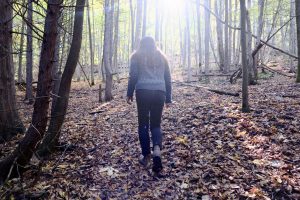
The concept of duality represented in the Taoist symbol of Yin Yang holds that opposing natures like light and dark, masculine and feminine, are neither inherently good or bad. One cannot exist without the other, and both are required for balance. Bay sees the receptive nature of the feminine element as crucial to her work.
“You can say you want something over and over again, but if you’re not ready to receive it you won’t. The feminine is the ability to receive, let’s say prosperity for example. If you believe that things are never going to work out, that life will always be a struggle, but that you’re somehow going to be rewarded for your suffering, that thinking is standing in the way of receiving prosperity—and all of the gifts that are available around us all the time. We block ourselves, we get in our own way. I think it’s really magical to just be able to allow things to come to you, and that is really feminine and really powerful.
“There are a lot of amazing women being drawn to the County and doing really diverse, interesting, creative things. I think that’s very special for the area… we’re in this shift from masculine to feminine energy, and you can really see it unfolding in the County. Women here are comfortable to be themselves and do what they feel called to do.”
Megan Marie Gates
Sound Practitioner & Meditation Guide
“Transformation and transcendence”
Music and movement have always been a part of Megan’s life. As a child she loved to sing and dance, eventually finding her way to the performing arts and working in musical theatre. When she eventually left the theatre world to pursue a career teaching yoga, her musical nature followed her. A sound practitioner discovered her background in performing arts and convinced her to learn to play the crystal singing bowls. It opened the gateway for her to use sound not as performance, but medicine and magic. But the transition from yoga practitioner to sound healer wasn’t without extraordinary growth and serious introspection.
“I noticed a lot of appropriation in the wellness community, and that led me on a journey of uncovering my own bloodline. There are a lot of people taking practices that aren’t theirs and then profiting off of them. And that’s problematic when those same practices have been reprimanded in really intense ways for the indigenous people that they were taken from. My search for my bloodline has been a part of my own decolonizing of myself. I want to know where my ancestors came from, and what they did. I’m Baltic, Celtic, and Slavic. All of those cultures are so rich, and the more I dive into them the more I see the interconnectedness of not only their spiritual practices, but of spiritual and creative practices all over the world. They’re just called different things and they look a little bit different.
“It’s been hard to uncover, because the colonization and the spread of the Church that’s happened all over the world happened in those areas first. Many of the pagan medicines and folk traditions were demolished by the Church. There’s so much from my Celtic background that I’ll never be able to find, all of those traditions that there are no written histories of because they were burned or destroyed. I wish I could be learning those things from my family, but that connection to bloodlines wasn’t important for them, historically—not as much as it is for some of us now.
“That’s a huge conversation that’s currently happening in the world. There’s a lot of European folks who haven’t done the digging to know where they come from. But it’s such an important part of who we are, because we’re so displaced. We’re settlers on land that is not ours.”
Megan’s work to reclaim that culture is interwoven with her love for music. She’s learned Celtic lore through legends and found herself drawn to the haunting melodies of Slavic folk songs. Music has remained a through line, constant in her life. But the context is changing.
“I used to dance tap, ballet, and jazz. Now I ecstatic dance or practice yoga, and the movement is all mine—it’s not based on how it looks, it’s based on how it feels. It takes away the idea that you have to be a good dancer to dance. Dancing is a birthright for everybody. For me, singing and music has shifted from sheet music to intuitive practices, singing with people and getting people to make sound when sound is such a scary thing for people to make. The idea that you have to be a good singer to sing is such bullshit. I want to change the thinking around that. Watching people ecstatic dance gives me crazy goosebumps all over my body, and I get the same feeling when I’m dancing in that way. I feel most free when I’m dancing. And I want everyone to feel like they can dance too, everyone can sing.”
For Megan, music is magical. She sees its orchestration and creation as a direct transmission of a greater creative force. Through the simple act of listening to music, she is able to enter a meditative state—and helps others do the same. Her sound ceremonies are a gently guided meditation. There are no words or prompts, only the ethereal singing of her crystal bowls punctuated by twinkling chimes or gentle drumming.
“Sound ceremonies are intuitive, never planned. But they’re always intentional. There’s a system of building up to a peak and bringing it back down so that there’s the stimulation and creation of different brain waves. The crystal singing bowls I use as the ‘meat’ of my sound meditations produce harmonic overtones and sounds that we don’t hear in our everyday lives, so they’re quite unique to the ears. When we listen to sounds like that and we practice deep listening, we start to slip from our normal Beta stage of brainwaves into slower, deeper states. First we enter Alpha, a state of creativity and calm. Next is Theta, a state of deep relaxation and meditation. Finally comes Delta, the sleep state. When we lay down in our beds we usually move quickly from Beta to Delta. But when you can slip into that space between being asleep and awake, interesting things can happen. When your mind is in that grey zone you can start to trip out a little bit, there’s a psychedelic response that happens in the brain.”
A sound bath ceremony can invoke all of these feelings and states. Every person’s response is unique and Megan loves hearing about individual experiences. Whether it’s a rare and sacred moment of true relaxation, or a vision experienced in vivid detail with all of the senses, the ‘what’ is always more important than the ‘how’.
“I feel like in our world right now we so desperately want everything to be proven by science. But the science and the mystical are sisters, they go hand in hand. The things that we’re just proving now in the West have been known by Eastern cultures and pagan cultures all over the world forever. Now that we’re proving it with science it’s considered “real”, but it isn’t any less mystical—and it wasn’t any less real before it was proven. It takes the magic out of things when we’re forced to explain the mystical, putting it into numbers and writing a paper about it. What’s more important is how you actually feel. How has the sound specifically affected you? Sound healing is magical for me. Those are my spells and that is my medicine.”
Rebecca Maracle
Traditional Medicine Healer & Mohawk Feathersmith
“I am medicine for you, and you are medicine for me”
Prince Edward County and the Bay of Quinte is part of a vast northern territory historically controlled by the Iroquois Confederacy. The Confederacy is made up of six nations, first brought together in the 12th century by the Peacemaker, Tekanawita. The easternmost nation, the Mohawks, had their ancestral homeland in the Mohawk River Valley, in what is now New York State. During the American Revolution, the Mohawk people were forced into war to defend their home. They allied with the British and helped win the war with some of the bloodiest battles taking place on their land. When the war ended, the British gave the Mohawk Valley to American forces, displacing the Mohawk people. As recompense for their loss of home and recognition for their military service, the Mohawks were given their choice of land along the north shore of Lake Ontario — the birthplace of Tekanawita.
Upon arrival in 1784, they found Loyalist settlers moving into the area. Over the next nine years, the Mohawks struggled to maintain their territory and reminded the Crown of their promise. They were given a small tract of land around the Bay of Quinte, just under 93,000 acres. Throughout the following decades, Loyalist settlers continued to come to the Bay of Quinte region. By 1843, the Crown reduced their land to 18,000 acres, what is now Tyendinaga Mohawk Territory—reallocating more than two thirds of the original tract to Loyalist families.
During this time the people of Tyendinaga were persecuted by the Christian settlers. Many of the teachings, ceremonies, and medicine went underground. But they still held on to those teachings and ceremonies. And somewhere in Rebecca’s family line, someone took on the responsibility to be the medicine for their people. Rebecca now works as a traditional medicine healer and Mohawk feathersmith in Tyendinaga, selling indigenous products and healing services from a small shop on Highway 49.
“Within the Mohawk community are clans, and each clan is considered to have their own unique gifts. The Bear clan are the medicine people, the Wolf clan are the protectors, the Turtle people are the slow, methodical thinkers. My father’s people were Turtle people, and my mother’s were Bear people. My Grandmother spoke Mohawk. My Grandmother was raised in a house where ceremonies still carried on and she knew how to do the medicine. All I’ve done and all I’ve learned have been through the well-guided teachings of my people. In Tyendinaga, we have always been called witches by the Christians who felt ‘the Indians needed saving’. They didn’t understand the connection to the natural world that we have. So with that came the negative connotation of being called a witch.
“In the Ohen:ton Karihwatehkwen (thanksgiving address) we talk about peace, power, and righteousness—the coming together of the good mind. When we come from a place of light, the medicine is good. Some people practice dark and some people practice light. And there are some people that practice both—it’s whatever’s in your mind. My name means ‘she brings the light’. Earth medicine and healing medicine all come from a place of light.
“I didn’t come to being a medicine healer right away, it was something I had to come into as an adult. Twelve years ago I asked Spirit what my purpose was, why I was living my life in this fog. Spirit said ‘I’m glad you finally asked that question. I’ve been trying to tell you since you were a little girl. All those times when you were afraid, and all of those times when you didn’t feel comfortable in your body, and all those times when you were not even in your body—those were times when we were trying to connect with you, but you didn’t understand. But now you’re asking the questions, you’re present, you’re seeking us out. You’re posing this question to Spirit and to the Universe and to God the Creator and to whoever will listen.’
“I remember my Grandfather telling me as a teenager, ‘Don’t ask a question if you’re not going to be responsible to the answer’. So Spirit served up my purpose to me on a platter, took the lid off and asked, ‘If not you, then who?’
“We all have a purpose and we all have gifts. Whether or not we understand how we’re meant to move forward. Whether or not we choose to step into that purpose. I believe I have a greater purpose than just to breathe. My purpose here is to affect change in whatever way Spirit shows me I’m meant to. I’m meant to affect change by being that light. I’m going to help you see into the recesses of who you are—your physical body, your spiritual body, your mental body, and your emotional body. And I’ll show you where your healing needs to start. What I’ve come to understand is that this healing needs to come from a place of love.
“When we say ‘I love you’ to each other, we are saying ‘I am medicine for you, and you are medicine for me.’ Everything in our culture comes to relationships—relationships to the water, relationships to the things that dwell within the water, relationships to all of those things that have roots, relationships to the Earth—to our very first mother. I’m honouring those relationships now.
“The medicines that I use—the wild ginger, the cedar, the white pine—they support us. Not just in our physical bodies, but our emotional and mental bodies as well. The medicine doesn’t just work on a physical level but on a spiritual level as well. Those natural medicines are there to help us support our journey. I will work to grow and learn these lessons. I will continue to shift and I will continue to raise that vibration until the day I take my last breath. And by doing that, I create my own healing.
“The only person I have actual control over is me. I can’t change my husband, my niece, my mother. I just love and support them in the stage they’re at now on their journeys. My love is medicine. I am medicine. We are all medicine. And when we can see that, when we embrace it, we start to love ourselves in a different way and that creates our own healing. That’s the type of healer I am. That’s the type of witch I am.
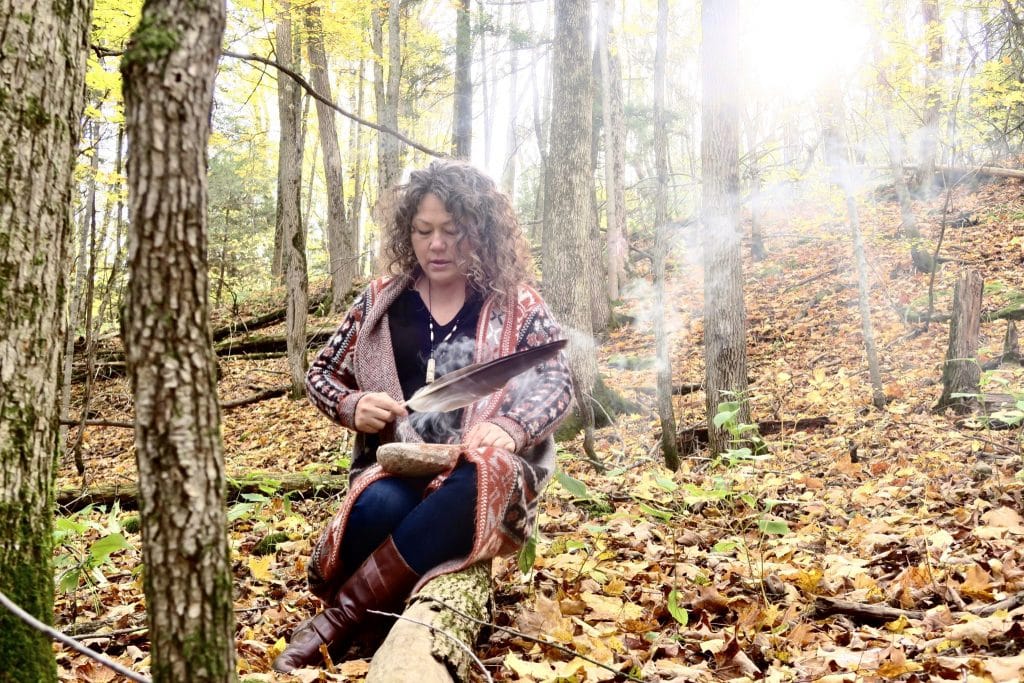
“Society is trying to prevent us from connecting right now, and you have to determine what canoe your foot is going to be in. Even though I have to operate my shop and I use Square to take payments and I promote myself on my Facebook Page, I still have to choose to keep one foot in the natural world. I’m proud of this little shop that was built by me and my husband. Everything here is indigenous made, by either myself or friends. It all has to resonate or it doesn’t come in. I choose to stay grounded to culture, and grounded to understanding my connection with creation. If I were to forget that, if I didn’t take the time to nurture that, I wouldn’t know how to nurture me. Loving creation is loving me, and loving me is loving creation.
“What separates me from a psychic, or any of those names people call themselves at fairs or conventions, is that helping people is my highest priority. I’ve gone and sat with those people and I’ve shared my story and my heart, and then—ding—when my 30 minutes or 5 minutes are up, they’d stop the session and send me away. And I thought, ‘You’re going to send me away, way more confused than when I walked in here. How is that helpful?’ And it becomes about the money, not the service. I still have to charge for my services, but it’s about the healing, not the money. I don’t have a little buzzer that dings. If I go over my time, that’s ok, because I’m meant to speak into people’s lives.
“The reason I charge for my time is because I’m not meant to just give my medicine away to everyone. But then there are some people I am meant to give my medicine away, and Spirit lets me know when that’s meant to happen. Sometimes when I’m out doing shows there are people that come up to me and I know I’m meant to take them aside and help them. They’ve approached me, they’ve come into my space and I know that I’m meant to do whatever it is that I’m spiritually guided to do, because I’m just the vessel.
“I know that in the end, Spirit will take care of me, because I’m doing what I’m supposed to be doing.”
***
There is something almost intangible about this place that makes it feel so much like home for so many people. There’s a movement here, a return to earth-conscious living, a connection to the land. This has always been the way of the witch, and now more than ever, these practices should be celebrated and shared. What is magic to you? What is medicine, and what is healing? From the winemaker that farms using biodynamic principles to the baker that intends for her food to bring comfort and warmth, magic is all around us, if you know where to look.
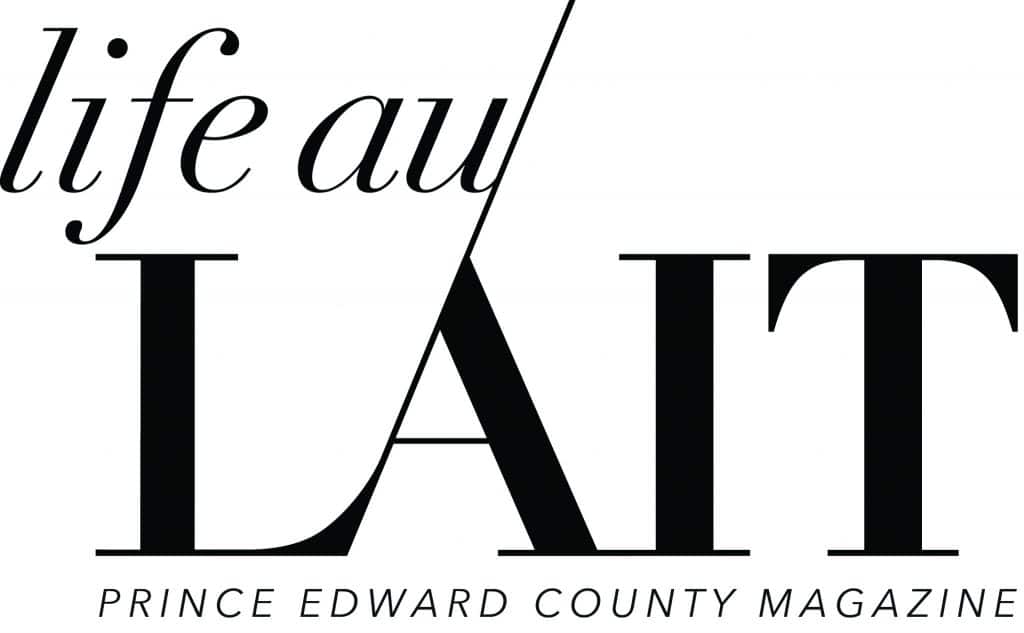


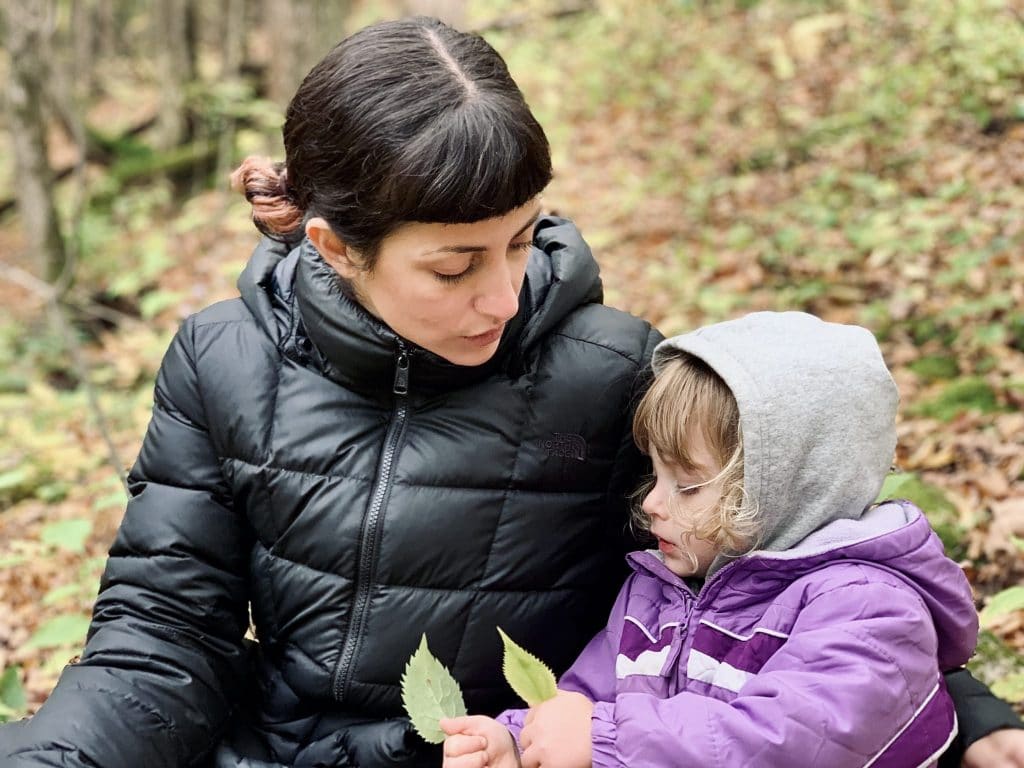

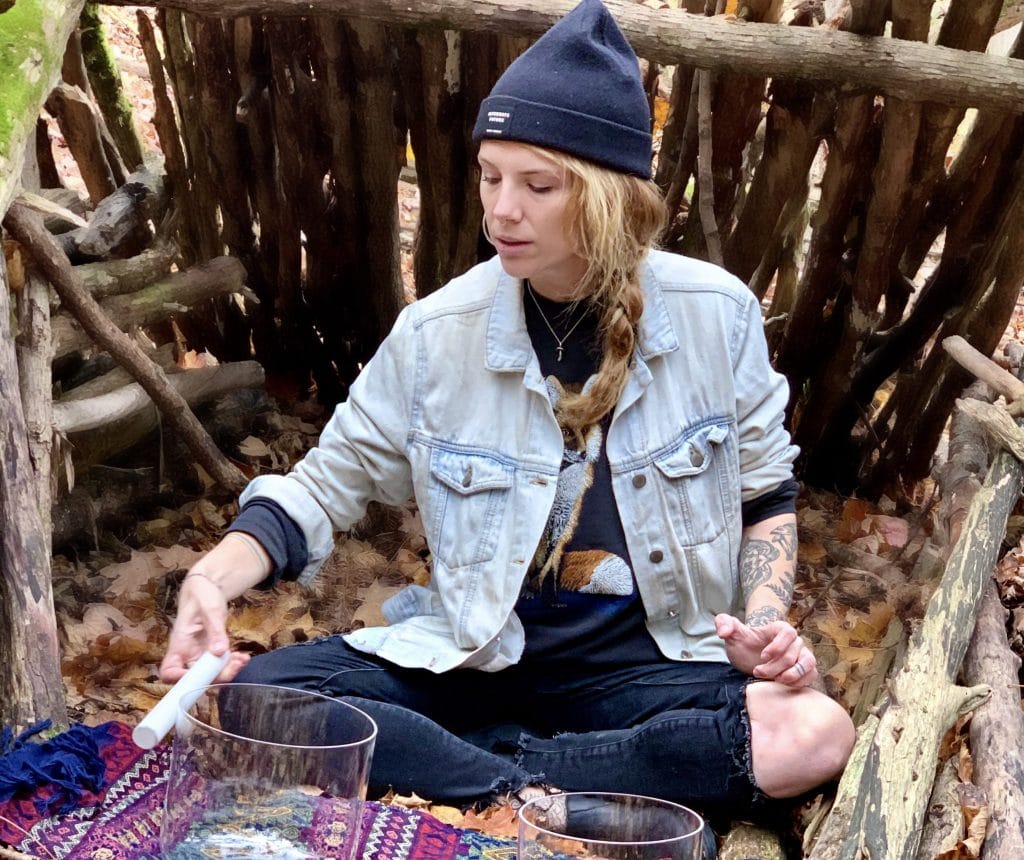

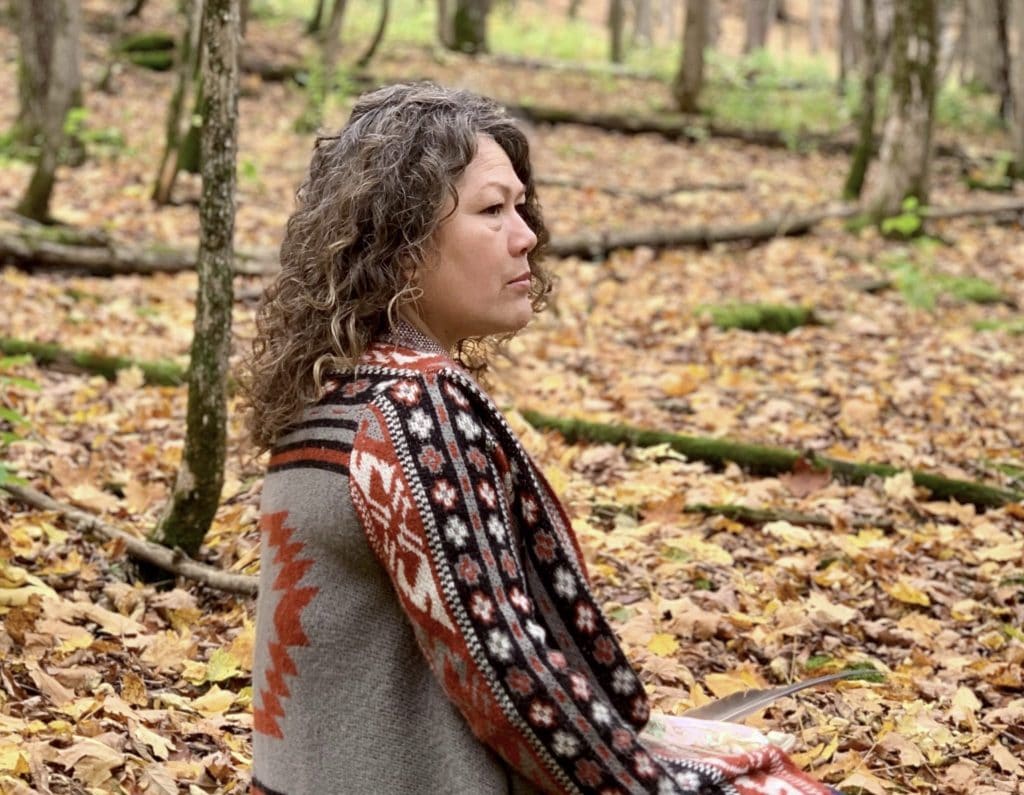




Nicely written. A contemplative article – well done!
Really enjoyed this.
this is amazing! love to know that we the women are out there doing what we have always done FOREVER. great article and blessing to you all.
I was raised in the Christian (Roman Catholic) tradition. My ancestors from Ireland were settlers in New York State. In my 66 turns around the sun I have been blessed to learn with teachers of many traditions. My sufi path is universal – meaning that devotion, prayer, gratitude, transcendence, mindfulness, service, sacrifice…. all of it… is present in every tradition – and sincere practitioners can enter into these states in any tradition and recognize them as their own. Not in the way of “appropriation” (after all, who was Jesus but a native middle eastern mystic – and what do we Christian Europeans want from him?)… but in the way of sincere respect. From the first moment I set foot in Rebecca’s shop I felt held in a womb-like sanctuary. Devotion lives in the air. Commitment to deeply felt values. Art. The sacred. It’s all there. I’ve also had two healing sessions with Rebecca informed by her traditional knowledge. If you have a question or concern, or if something is blocked…. I highly recommend a session with Rebecca. She will know if she is meant to work with you. Beautiful article, Rebecca! CONGRATS!
Great read! namaste🙏😊
I was sooooo excited, thinking I found some like-minded ladies here on my island 🏝 (Prince Edward Island ) lol but I seriously enjoyed reading this article, happy to have found it, thanks 🧙♀️